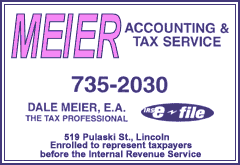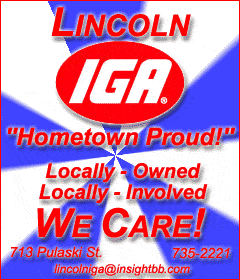|
State
to enact Emergency Energy Conservation Plan for winter
 Send a link to a friend
Send a link to a friend
Lowered
thermostats to reduce winter heating costs and save state millions
[NOV. 21, 2005]
CHICAGO -- Gov. Rod R. Blagojevich ordered the thermostats lowered in thousands of state facilities to
reduce the state's winter heating costs. Setting back the thermostat
in state office buildings and other facilities from Nov. 1 through
April 15, 2006, will save the state an estimated $4 million in
heating costs. The governor took this action as part of his
Emergency Energy Assistance Initiative, launched last month to
confront steep increases in winter heating costs due to record-high
natural gas prices.
|
|
"We're doing the same thing here in state government that we're
asking all Illinois families to do this winter -- we're lowering the
thermostat to conserve energy to keep our winter heating bills
down," Blagojevich said. "With natural gas prices at a historic
high, we have to do all we can to reduce our fuel use."
The Emergency Energy Conservation Plan will affect nearly 2,000
state facilities, including office buildings, warehouses, garages
and other facilities. Most facilities will lower their daytime
temperatures from 70-72 degrees to 68 degrees. At nighttime and
during off-hours, facilities not open to the public or to employees
working routine schedules will turn back their thermostats to 55
degrees. Residential facilities such as prisons and military
barracks will lower their temperatures to 68 degrees around the
clock.
The plan does not affect temperatures at inpatient health care
facilities, homeless shelters and other buildings housing vulnerable
populations or where temperature-sensitive public safety and law
enforcement operations are conducted.

"This Emergency Energy Conservation Plan is the next step in our
comprehensive effort to help prepare everyone in Illinois for this
winter's unprecedented heating prices," said Ed Hurley, director of
emergency energy assistance. "For every degree people lower their
heat between 70 degrees and 60 degrees, households can save about 3
percent on heating costs. People should also replace or clean their
furnace filters monthly, reduce their hot-water temperature and
weatherize their homes to seal up air leaks around doors and
windows, pipes and cracks, to help keep the heat in. All these steps
will help lower utility bills. But, if people simply cannot afford
to adequately heat their homes, they should sign up for energy
assistance programs or get help by going to a warming center in
their community."
Recently, Blagojevich joined more than two dozen other
governors in sending a letter to President Bush and congressional
leaders urging them to approve additional federal funding for the
Low Income Home Energy Assistance Program. Blagojevich took this
action because the $2.1 billion in current funding is inadequate to
help vulnerable families get through this winter.
[to top of second column in this article]
 |
 To ensure that limited LIHEAP funds help as many families as
possible, Blagojevich recently convinced Illinois' major utility
companies to waive reconnection fees and suspend deposit
requirements for customers receiving LIHEAP. This action -- which
ensures that LIHEAP funding will be used directly for heating costs,
not administrative add-ons that can add more than $400 to a bill --
the state can help thousands more low-income households with their
heating costs this winter.
Through LIHEAP, a state- and federally funded energy assistance
program run by the Illinois Department of Healthcare and Family
Services, heating bill payments are made on behalf of households
with incomes of up to 150 percent of the federal poverty level.
Blagojevich made LIHEAP funding available on Sept. 1 to meet winter
heating needs for households with elderly or disabled members and
those currently without home heating due to service disconnections.
On Nov. 1, all LIHEAP-eligible households were allowed to apply.

A single-person household can qualify for LIHEAP with a monthly
income of up to $1,196, a two-person household up to $1,604, and a
family of four can earn up to $2,420. Benefits are paid directly to
the household's appropriate utility. The energy grant applications
are processed through a network of 35 local administering agencies
around the state. These agencies accept applications on a
first-come, first-served basis until funding for the program is
exhausted. The winter heating program is expected to reach 300,000
households this winter with an estimated $150 million in state and
federal funding.
For a complete listing of LIHEAP's local administrating agencies
and additional information about the grant program, go to
www.liheapillinois.com or call the toll-free LIHEAP
information line at 1 (800) 252-8643.
There has also been a series of Winter
Assistance Days across the state to offer people from
low-income households the opportunity to apply for LIHEAP grants,
receive free weatherization kits and learn about several state
health care programs.
[News release from the governor's
office] |